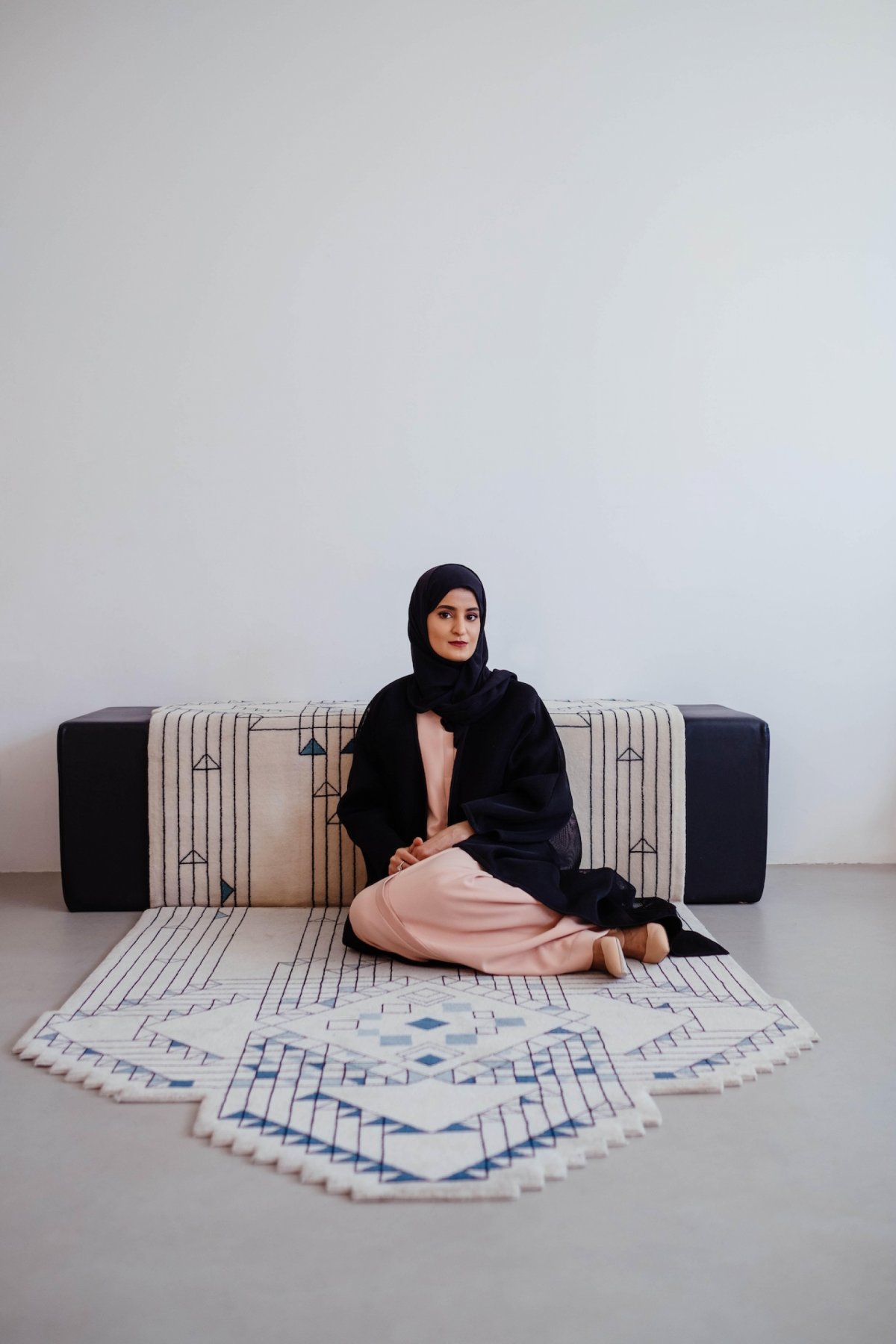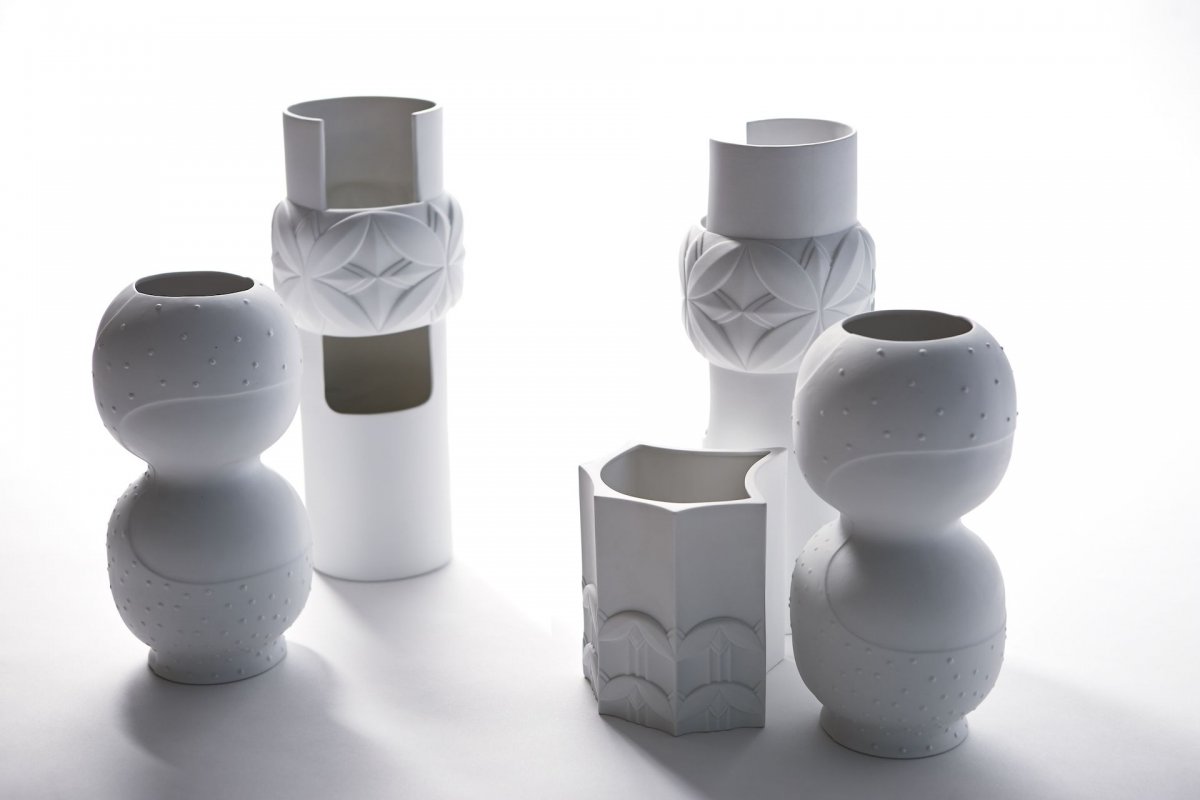In the Studio: Aljoud Lootah

Read the Emirati product designer's unique approach to create functional, timeless and unique products.
Words by Aneesha Rai in Design & Architecture · Aug 24th, 2021
In this edition of 'In the Studio', we interview Emirati multidisciplinary designer, Aljoud Lootah, who champions the art of fusing Emirati culture and artisanal techniques through contemporary design. Her experimental approaches to materials and aesthetics has earned her many accolades for her work. We speak to Aljoud about her process and how budding Emirati designers can enter the scene.
Q: Tell us about your design process.
Aljoud: It is quite simple. I tend to seek inspiration from my surroundings. My history, culture and upbringing play a big role on how a design is often developed. For me, it is important to tell the story of who we are as Emirati designers through a modern or contemporary medium. Design is an international language, and I aim to tell stories of the UAE through it. After finding a point of inspiration, I tend to work on breaking down its elements, or highlighting and enhancing its characteristics. I then build it back together by adding my own touches and redesigning the elements through functional products.
Q: What's your view and thoughts on the pace at which the design scene in Dubai is developing?
Aljoud: The design scene in Dubai is steadily growing. With the launch of various design trade fairs, Dubai Design Week and dedicating a complete District (Dubai Design District) in the city, the design infrastructure grew stronger over the years.


Q: How important are design collaborations with other designers in cultivating the design culture in the region?
Aljoud: I believe that of the most exciting aspects of design (and most challenging) is working on collaborations. It enhances the ongoing learning process that I am always keen on. Throughout collaborations, we bring two worlds together, provoke thoughts and open conversations on how to elevate a design concept or find a balance between what both parties have to offer.
QWhat made you pursue a career in product design?
Aljoud: In 2012 I joined a programme by Tashkeel and Dubai Culture that focused on Product design. I submitted my application from mere curiosity. I wanted to know more about product design, and I thought it would be the perfect opportunity to do so. Throughout the 6 months programme we visited London Design Festival and several studios in Barcelona to learn about product design, and towards the end of the programme, we were required to design our own product to be exhibited at Design Days Dubai. It was such a mind-opening experience as I fell in love with the idea of merging my graphic design background in product design (from 2D to 3D functional products). I haven’t stopped since then. I believe it was the turning point in my life where I realized this is what I want to do for a living.



Q: What advice would you give to budding Emirati product designers looking to enter the space?
Aljoud: To be passionate about what you do. We often get mesmerized with the final product without realizing how much effort, time and resources are put into it. We fail so many times in the process, but what keeps us going is always our passion. We want it to happen.
Q: Please suggest the perfect Aljoud Lootah Design product as a housewarming present for our readers
Aljoud: I believe this would be the set of Tebr porcelain vases. They were inspired by carvings of patterns found on an old wooden door in the palace of the late Founding Father Sheikh Zayed bin Sultan Al Nahyan. They are made of porcelain and feature the carvings and motifs found on the door in a very modern and minimal way. Historically, wooden doors were a canvas for creativity, where the decorative carvings on the doors reflected the status of that household. The motifs used in 'Tebr' carry a strong character, reminiscent of these doors. They tell a story of our history.


Q. What is your summer read?
Aljoud: It must be “Sheikh Zayed: An Eternal Legacy” by Myrna Ayad. My love for Zayed is infinite.
Q. Tell us your three favorite designers/architects whose work you admire
Aljoud: Patricia Urquiola is my favorite as I admire her design ethos; Abdalla Al Mulla (emerging Emirati Designer / Architect) – he is one of the smartest people I've met; so humble! And Lebanese duo David & Nicolas are spectacular.